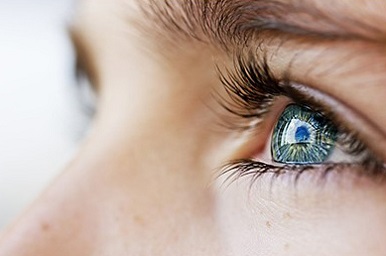Nikhil Prasad Fact checked by:Thailand Medical News Team Jul 09, 2024 9 months, 5 days, 17 hours, 10 minutes ago
COVID-19 News: Unveiling COVID-19's Impact on Eye Health
The COVID-19 pandemic has left an indelible mark on many aspects of health, including our eyes. This
COVID-19 News report explores the findings of a groundbreaking study conducted by researchers from the First Affiliated Hospital of Harbin Medical University in China, which reveals how COVID-19 affects the ocular surface microbiome (OSM) and the subsequent implications for eye health.
 COVID-19 Causes Changes To Ocular Microbiome Which Can Affect Eye Health
Understanding the Ocular Surface Microbiome
COVID-19 Causes Changes To Ocular Microbiome Which Can Affect Eye Health
Understanding the Ocular Surface Microbiome
The ocular surface microbiome (OSM) consists of various microorganisms that live on the surface of our eyes. These microbes play a crucial role in maintaining eye health by protecting against pathogens and supporting immune responses. A balanced OSM is essential for preventing ocular diseases like conjunctivitis, dry eye, and keratitis.
Study Participants and Methods
The study involved 43 participants divided into three groups: a control group of individuals with no history of COVID-19, a group of COVID-19 positive patients, and a recovery group of individuals who had recovered from COVID-19. Conjunctival swabs were collected from all participants and analyzed using 16S rRNA amplicon sequencing to examine the bacterial communities on their ocular surfaces.
Key Findings
-Increased Microbial Diversity
One of the most striking findings of the study was the increased microbial diversity in the COVID-19 positive and recovery groups compared to the control group. The Shannon index, which measures species diversity, was significantly higher in the COVID-19 positive group, indicating a richer microbial composition. This increased diversity is usually associated with disease states.
-Shifts in Dominant Microbes
At the genus level, the study found significant changes in the composition of the OSM. In the COVID-19 positive and recovery groups, Pseudomonas emerged as the dominant genus, replacing the typically abundant Ralstonia found in the control group. This shift suggests that COVID-19 disrupts the normal microbial balance on the ocular surface, potentially leading to an increased risk of eye infections and other ocular complications.
-Persistent Effects Post-Recovery
Interestingly, the study revealed that these microbial changes persisted even in the recovery group, indicating that the impact of COVID-19 on the ocular microbiome continues long after the acute phase of the infection. This finding provides insight into why some individuals experience prolonged eye symptoms even after recovering from COVID-19.
Microbial Community Composition and Structure
The study identified significant differences in microbial composition at the phylum and genus levels among the three groups. At the phylum level, the OSM of all groups was do
minated by Proteobacteria, Actinobacteriota, Bacteroidota, and Firmicutes. However, the relative abundance of these phyla varied significantly. The experimental group (COVID-19 positive) showed a decrease in Proteobacteria and an increase in Actinobacteriota and Bacteroidota, indicating a disturbance in the microbial balance.
Implications for Eye Health
The alterations in the ocular surface microbiome observed in this study have significant implications for eye health. The increased presence of Pseudomonas, for example, is associated with a higher risk of keratitis, an inflammation of the cornea that can lead to severe vision problems if not treated promptly. Additionally, the study highlights the potential for COVID-19 to exacerbate conditions like dry eye and conjunctivitis, which were already known to be associated with the virus.
Long-Term Implications
The persistence of altered microbial compositions in the recovery group suggests that COVID-19 can have long-lasting effects on ocular health. The study's findings underscore the need for further research into the long-term impacts of COVID-19 on the OSM and its role in ocular diseases. Understanding these relationships better could lead to new strategies for preventing and managing eye conditions in COVID-19 patients.
Conclusion: A Call for Further Research
This study highlights the complex and lasting effects of COVID-19 on the ocular surface microbiome. By showing how the virus disrupts the microbial balance, leading to increased diversity and changes in dominant species, it opens new avenues for understanding and managing COVID-19's impact on eye health. The persistence of these changes in recovered individuals underscores the need for ongoing research to develop effective treatments and preventive measures.
The study findings were published in the peer-reviewed journal: Frontiers in Microbiology.
https://www.frontiersin.org/journals/microbiology/articles/10.3389/fmicb.2024.1389139/full
For the latest
COVID-19 News, keep on logging to Thailand Medical News.
Read Also:
https://www.thailandmedical.news/news/breaking-mild-covid-causes-a-slow-progressing-eye-debilitating-condition-that-most-are-not-even-aware-of-till-it-s-too-late
https://www.thailandmedical.news/news/sars-cov-2-is-able-to-cross-the-blood-retinal-barrier-and-cause-damage-to-the-eyes
